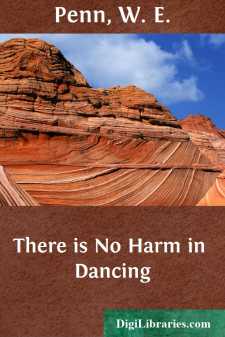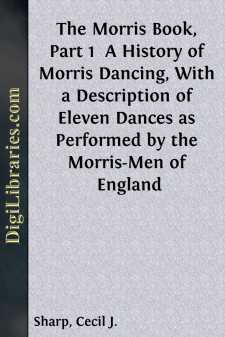Performing Arts Books
Sort by:
CHAPTER I. FIRST AND LAST STEP. Since my conversion from a dancing master and a servant of the "Evil One" to an earnest Christian and a servant of the Lord Jesus Christ, the question has been repeatedly asked me: "Is there any harm in dancing?" And letters innumerable have been coming in with questions to the same effect. The more I mingle with people outside the dancing circle the more...
more...
by:
Alexander Dyce
INTRODUCTION. William Kemp was a comic actor of high reputation. Like Tarlton, whom he succeeded “as wel in the fauour of her Maiesty as in the opinion and good thoughts of the generall audience,” he usually played the Clown, and was greatly applauded for his buffoonery, his extemporal wit, and his performance of the Jig. That at one time,—perhaps from about 1589 to 1593 or later—he belonged...
more...
by:
W. E. Penn
INTRODUCTION. Major W.C. Penn, the author of the following treatise on the modern dance, has requested the writer to pen a few thoughts introductory to a theme he has presented with such pith and power to listening thousands in his travels as an Evangelist. Various inquiries have been made as to how Major Penn, a lawyer in a lucrative practice, and with all the attractions of wealth and of fame before...
more...
ADVERTISEMENT. What I have here to say is rather in the nature of an apology than of a preface or advertisement. The very title of a Treatise upon the art of dancing by a dancing-master, implicitly threatens so much either of the exageration of the profession, or of the recommendation of himself, and most probably of both, that it cannot be improper for me to bespeak the reader’s favorable precaution...
more...
by:
Cecil J. Sharp
INTRODUCTION. We have been drawn to the publication of tunes and description of the old English Morris, not primarily for the information of the archæologist and scholar, but to help those who may be disposed to restore a vigorous and native custom to its lapsed pre-eminence. Whether we have erred in believing that there exists to-day a wide and keen desire for that restoration will be plainly shown...
more...
THE INN-YARDS BEFORE the building of regular playhouses the itinerant troupes of actors were accustomed, except when received into private homes, to give their performances in any place that chance provided, such as open street-squares, barns, town-halls, moot-courts, schoolhouses, churches, and—most frequently of all, perhaps—the yards of inns. These yards, especially those of carriers' inns,...
more...
by:
Ned Wayburn
Someway I don't care for the word "Preface." As I think the matter over, I'm not sure that I ever read a preface to any book; and this fact suggests to me that possibly others would pass by this page in my book if I dubbed it by that much-worn and very trite word. So I've hailed you all with a much more cheery and stimulating title for my opening page; and perhaps, in...
more...








